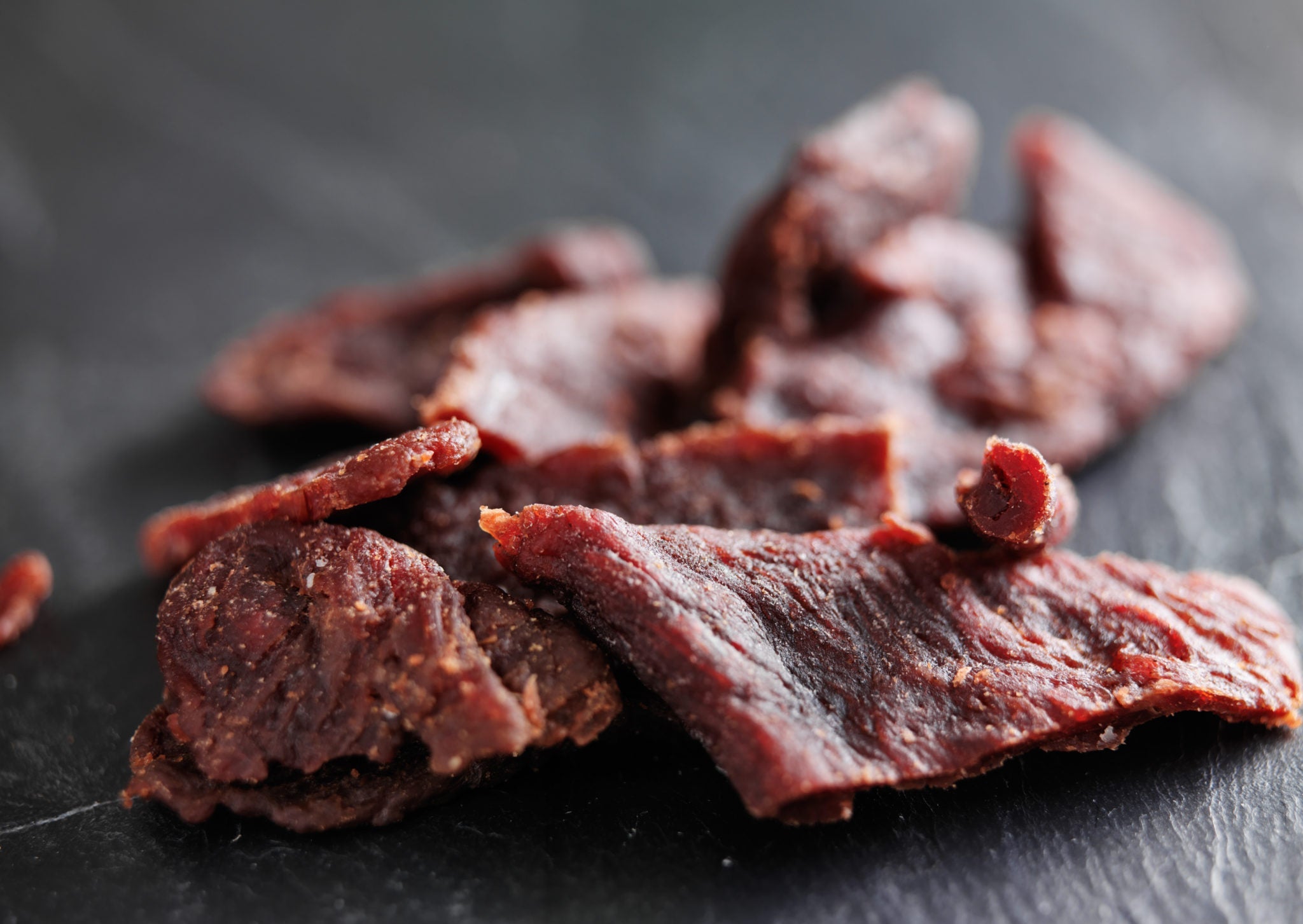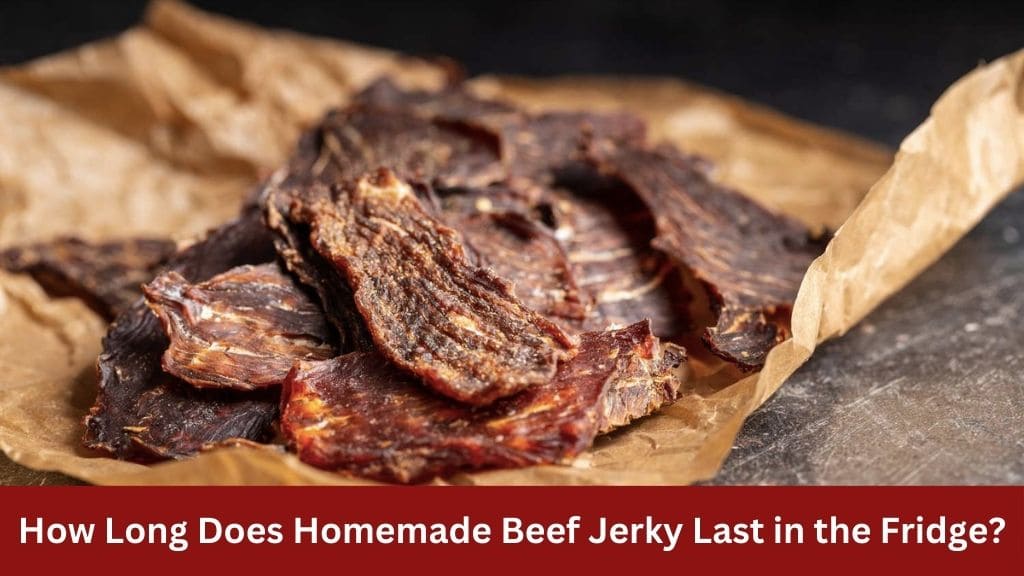Beef jerky, a savory and protein-packed snack, is a favorite among many. Whether you’re making it at home or purchasing it from a store, knowing how to store it properly is essential to maintain its freshness and flavor. In this comprehensive guide, we’ll explore the shelf life of homemade beef jerky when stored in the fridge, along with some tips on maximizing its longevity.

Before delving into its shelf life, let’s briefly understand what homemade beef jerky is. Beef jerky is a dried meat snack made by marinating thinly sliced beef in a mixture of seasonings and then dehydrating it to remove moisture. This process not only intensifies the flavors but also prolongs the shelf life of the meat.
Homemade vs. Store-Bought Beef Jerky
- Control Over Ingredients: When making beef jerky at home, you have full control over the ingredients, allowing you to customize the flavor and adjust the seasoning according to your preferences.
- Freshness: Homemade beef jerky is often fresher since you can choose the quality of the meat and ensure it’s free from additives or preservatives.
- Cost-Effectiveness: While store-bought beef jerky can be expensive, making it at home can be more cost-effective, especially when buying meat in bulk.
Shelf Life of Homemade Beef Jerky in the Fridge

Moisture Content
One of the critical factors affecting the shelf life of beef jerky is its moisture content. Homemade beef jerky undergoes a dehydration process where moisture is removed from the meat, making it less susceptible to bacterial growth. However, even with thorough dehydration, some moisture may remain, especially if the drying process is not adequately controlled. Moisture content plays a significant role in determining how long the beef jerky can safely be stored in the fridge.
Bacterial Growth
Bacteria thrive in moist environments, making proper moisture control essential for preventing bacterial growth in beef jerky. Storing homemade beef jerky in the fridge helps slow down bacterial growth, extending its shelf life compared to leaving it at room temperature. However, it’s crucial to ensure that the beef jerky is thoroughly dried before refrigerating it to minimize the risk of bacterial contamination.
Packaging
The way homemade beef jerky is packaged also affects its shelf life in the fridge. Proper packaging helps protect the beef jerky from exposure to air and moisture, which can accelerate spoilage. Airtight containers or resealable plastic bags are ideal for storing beef jerky in the fridge, as they create a barrier against external contaminants. Additionally, packaging the beef jerky in individual portions can help maintain freshness each time the container is opened, reducing the risk of exposure to air and moisture.
Temperature Control
Maintaining the proper temperature in the fridge is crucial for preserving the freshness of homemade beef jerky. The optimal temperature range for refrigeration is typically between 34°F to 40°F (1°C to 4°C). Keeping the fridge at the right temperature slows down bacterial growth and helps extend the shelf life of perishable foods like beef jerky. It’s essential to avoid temperature fluctuations, as they can compromise the quality and safety of the beef jerky.
Cross-Contamination
Preventing cross-contamination is another consideration when storing homemade beef jerky in the fridge. It’s essential to store the beef jerky away from other perishable items, such as raw meat, poultry, or seafood, to avoid the risk of cross-contamination. Using separate containers or placing the beef jerky on the upper shelves of the fridge can help minimize the likelihood of contact with other foods that may harbor harmful bacteria.
Signs of Spoilage

Mold Growth
Visible mold growth on the surface of homemade beef jerky is a clear indication of spoilage. Mold can develop when the beef jerky is exposed to excessive moisture or stored in unsanitary conditions. Any signs of mold should prompt immediate disposal of the beef jerky to prevent the risk of foodborne illness.
Off Odors
Spoiled beef jerky may emit foul or off odors that indicate bacterial growth or rancidity. If the beef jerky smells sour, musty, or unpleasant, it’s a sign that it has gone bad and should not be consumed. Trust your sense of smell and discard any beef jerky with off odors to avoid potential health risks.
Changes in Texture
Spoiled beef jerky may undergo changes in texture that affect its appearance and mouthfeel. It may become excessively dry, rubbery, or slimy, indicating microbial contamination or deterioration. If the beef jerky feels unusually hard, soft, or sticky, it’s a sign that it has spoiled and should be discarded.
Discoloration
Any abnormal discoloration of homemade beef jerky is a red flag indicating spoilage. Discoloration may manifest as dark spots, green patches, or an overall change in color from its original appearance. These changes in color may result from oxidation, mold growth, or bacterial contamination, signaling that the beef jerky is no longer safe to eat.
Additional Considerations
While these signs are indicative of spoilage, it’s essential to exercise caution and use your judgment when assessing the safety of homemade beef jerky. When in doubt, it’s best to discard the beef jerky to avoid the risk of foodborne illness. Additionally, it’s crucial to store homemade beef jerky properly, follow recommended storage guidelines, and regularly inspect it for signs of spoilage to ensure its safety and quality.
Conclusion
Homemade beef jerky can be a delicious and convenient snack when prepared and stored correctly. By following proper storage practices and monitoring for signs of spoilage, you can enjoy homemade beef jerky for up to 1 to 2 weeks in the fridge. Remember to cool the jerky before storing it, use airtight packaging, maintain appropriate temperature levels, and discard any jerky that shows signs of spoilage. With these precautions in place, you can savor the flavor of homemade beef jerky with confidence and peace of mind.





